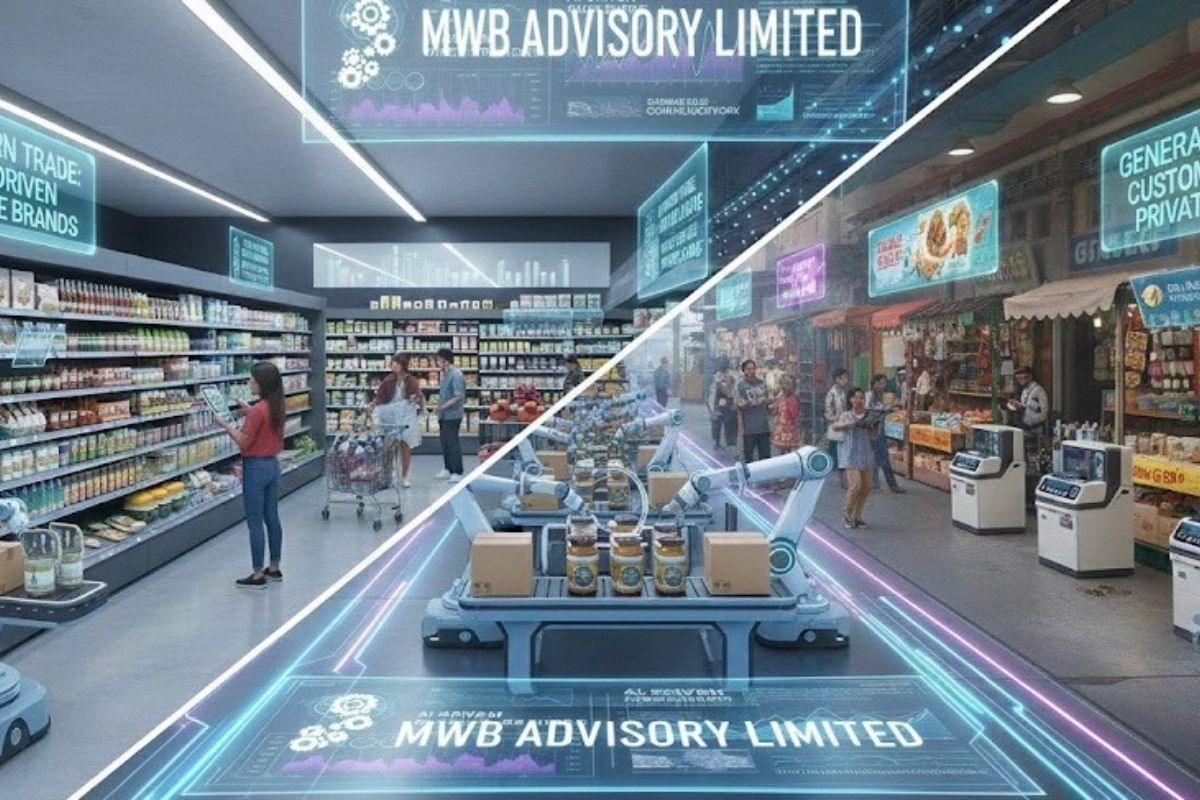
The Private Label Revolution: A Strategic Blueprint for 2030 Martin Bailie, CEO and Founder, MWB Advisory Ltd 🇮🇳 🇪🇺 🇿🇦

Private label is experiencing sustained, robust growth, fuelled by consumer demand for value, quality, and choice in a challenging economic environment. It is the single most reliable source of profit for modern retailers.
Market Scale and Growth
The financial incentive is clear: retailers realise 25-30% higher gross margins on private label versus national brands, making it the core engine for P&L health and funding future investments. Furthermore, private labels are now leading in high-margin, innovation-driven sectors, with the strongest growth observed in categories like chilled , Beverages, Pet Care, and Cosmetics.

The Transformative Blueprint: Vertical Integration (The Aldi/Lidl Model)

The discounter model provides the ultimate template for leveraging private label to control the value proposition and maximise supply chain efficiency—a necessary model for all future-proof retailers.
Control of the Value Chain
The discounters achieve market dominance by creating a vertically aligned private label machine:
• Sourcing Power: By focusing on only ~2,000 SKUs per store, they can place massive, consolidated orders globally, negotiating up to 20% deeper cost reductions from manufacturers than competitors.
• Logistics and Efficiency: They mandate simple, standardised, shelf-ready packaging and streamline logistics, reducing both manufacturing costs and in-store labour costs.
• Margin Protection: The high percentage of private label products insulates the P&L from national brand price wars, ensuring the retailer maintains healthy, controlled margins.
The Roadmap for the Next 5 Years (2025–2030)

Future success is defined by a commitment to Brand Infrastructure over basic sourcing, addressing critical pitfalls with three key mandates:
• Pitfall: Poor Quality Control requires a Robust Supplier Partnership focused on Joint R&D and strict quality audits.
• Pitfall: Generic Copying demands Data-Driven NPD—using loyalty data to identify “white space” trends and launch exclusive, first-to-market formulations.
• Pitfall: Internal Misalignment necessitates C-Suite Ownership, ensuring Private Label is a top-down, strategic priority across all departments.
Future success rests on three non-negotiable pillars:

1. Strategic Control & Advantage: Re-engineer the supply chain to achieve vertical alignment and secure a COGS advantage that national brands cannot match.
2. Advancing Innovation & Branding: Implement a tiered brand architecture where premium labels lead on consumer trends (health, organic, convenience).
3. Sustainable Purpose & Trust: Embed sustainability (recyclability, ethical sourcing) into the development process to future-proof the brand and build essential consumer trust.
India Market Domination Blueprint (2025–2030) @retailassociationofindia

To dominate the highly competitive and regionally diverse Indian Modern Trade market, focus on hyper-localisation, digital integration, and fresh category dominance.
1. The Glocalisation Imperative
• Regional Palate Adaptation: Launch region-specific variants (e.g., different masala blends) in high-volume categories.
• Vernacular Packaging: Feature local language text prominently on packaging to build trust with non-metro, value-seeking consumers.
• Pack Size Strategy: Aggressively launch smaller-unit packs (SKUs) at lower price points to cater to high price-sensitivity.
Price Architecture and Positioning: Tiered Value Strategy

Price positioning must reflect the highly fragmented Indian income demographics, utilising a multi-tiered approach to maximise market capture and margin control:
• Entry-Level (Price Fighter): Positioned at or below unorganised market alternatives to win the initial household basket.
• Core Value (Margin Engine): Positioned 20-30% cheaper than the equivalent National Brand to drive margin.
• Premium/Specialty (Aspiration): Positioned at a slight discount (5-10%) to the premium National Brand leader to capture affluent segments.
Final Takeaway & Call to Action!
The era of treating Private Label as merely a defensive “cheap alternative” is over. The future of retail margin is intrinsically linked to the agility and quality of your owned brands.
For established retailers in Europe, the UK, and South Africa, the mandate is vertical alignment and innovation to match the discounter model’s efficiency. For those targeting growth markets like India, success is non-negotiable without hyper-localisation and a multi-tiered price architecture.
The time to invest in PL as a core brand infrastructure—not a tactical procurement exercise—is now.
Ask Yourself: Is your Private Label strategy built to defend margins, or is it built to dominate the market by 2030? Let’s discuss where the real growth levers lie.

